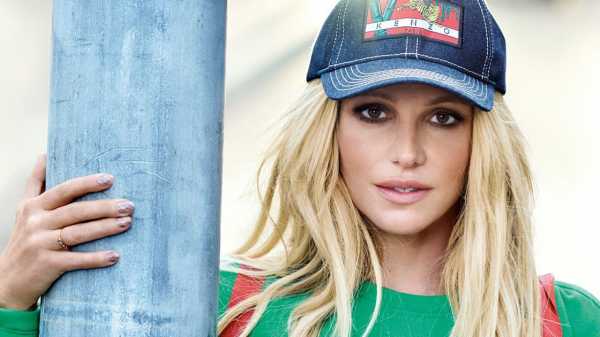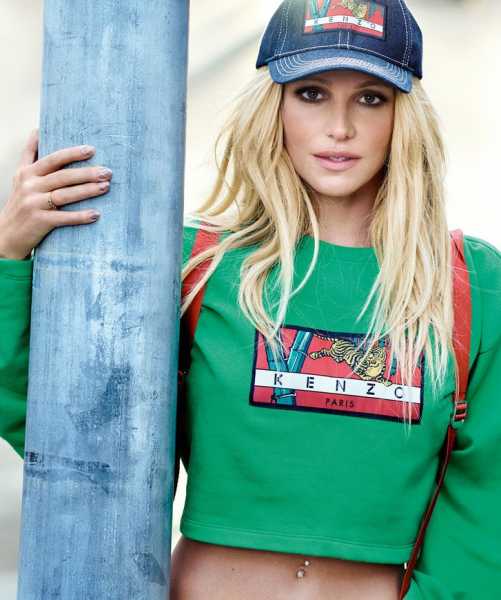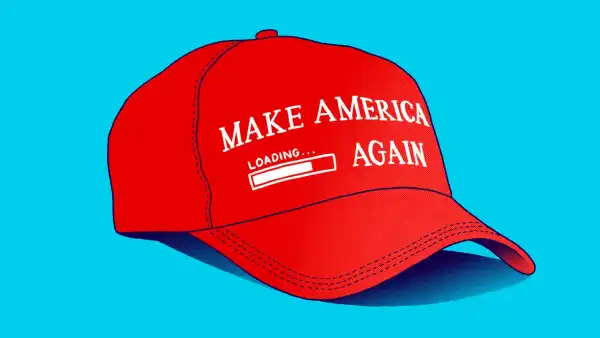

Britney Spears has long been almost uniquely incompatible with the fashion industry. Now she’s the face of Kenzo’s La Collection Memento.
Photograph Courtesy Kenzo
In the twenty-plus years since Britney Spears became famous, she has not once starred in a major fashion campaign (with a minor exception: a stint for Candie’s for Kohl’s, in which she sat astride a pink piano, grazing the keys in slouchy boots). When it was announced, last week, that the Paris label Kenzo had anointed her the face of the retrophilic La Collection Memento for spring, 2018, Kenzo’s creative director, Humberto Leon, mused, “She could have been attached to so many brands.” But could she have? Spears, who had been made the face of precocious sexuality and then precocious disaster, has been almost uniquely incompatible with the fashion industry. As the personal stylist Britt Bardo said in 2007, “Yes, I’ve done Britney Spears, but don’t blame me, O.K.?” Bardo counted “It” girls such as Cameron Diaz and Jennifer Lopez among her charges—women who were willing to be her mannequins. By contrast, Bardo said of Spears, “I make her up and she just takes everything off and does her own thing.” As In Touch Weekly noted, “not long afterwards, Spears was spotted strutting at Shutters in Santa Monica in cowboy boots and a fluorescent bikini.”
At the beginning, Spears, the daughter of a housing contractor and a schoolteacher, used her outfits as costumes meant to optimize her performance: as an accomplished young gymnast with chalked-up hands in her home town of hot Kentwood, Louisiana, wearing a flexible singlet; as a country girl on “The Mickey Mouse Club,” in bolero vests, cowboy boots, and shorts of modest length. And as a pop star Spears was outfitted in feminine overstatements: the aching-to-please schoolgirl, gyrating in a plaid kilt; the rigid sex-bot, wearing a red bodysuit as a second skin; the beautiful invalid, swathed in beige, losing consciousness in a clean white tub.
As a girl, I found Spears’s gift for projecting the agitated intelligence of fed-up girls almost frighteningly appealing. Spears was not the idol whose style one would go broke imitating, as one would Aaliyah, who was a matron saint of high-end streetwear; it was Spears’s mood that we wanted to emulate. She was not a designer’s girl; in fact, she communicated best when shedding clothes, tearing off a pin-striped pants suit to reveal a bejewelled, nude two-piece, at the MTV Video Music Awards, in 2000, while she performed “Oops! I Did It Again.” In the aughts, people forced themselves into low-rise jeans; Spears’s pairs went dangerously low, exposing hipbone and ass crack, and the fairy tattoo above it. Fashion loves the quiet wink of the clavicle, the suggestive sensuality of ankles; Britney was totally obvious, reorienting the female silhouette around midriff and lower back. An inveterate entertainer, she looked ludicrous on the red carpet in gowns.
As Spears became one of the biggest-selling music artists of all time, she who had been a child star was also struggling with the question of her personal agency. Along with Anna Nicole Smith, Kelly Osbourne, and Lindsay Lohan, she was a permanent item on the tabloid weekly’s “Worst Dressed” lists, which also serve, retrospectively, as craven chronicles of women judged to be mentally unwell and morally confused. All along Rodeo Drive, the nouveau riche and their lackeys were participating in the class subterfuge that made trucker hats and jogging suits the wardrobe of the élite. Spears wore them, too, but the paparazzi photos showed that hers were actually dishevelled, visibly worn. Her looks suggested a desire to be truly, not ironically, anonymous, but she was always recognizable: in the oversized men’s jacket and little choker she wore on the way to marrying Jason Alexander, in Las Vegas, in 2004; in the many obscuring fedoras; in the cheap wigs she sported on her custody dates with her two children; in those fraying Uggs she stood in to pump gas.
At one point, in August of 2004, Spears left a gas station wearing a white halter, cutoffs, and no shoes. The paparazzi were there. They were also there, stalking her outside a Jiffy Lube, days after she left a rehabilitation facility and, at the age of twenty-five, shaved her head at a Los Angeles salon. Antagonized by a paparazzo named Daniel Ramos, a hoodie-wearing Spears busted in the windows of his S.U.V. with an umbrella. “It was a bad moment in her life,” Ramos, who auctioned off the umbrella last year, told Broadly. “Unfortunately, it was captured.”
Part of the vitriol directed at Spears during the time of her public breakdowns was driven by her perceived proximity to the white working class. The male writers of her songs forced her to sing in an unnaturally high register, but when she cursed the paparazzi that stalked her, her drawl was low. “The Tragedy of Britney Spears,” a 2008 Rolling Stone profile, opens with the then twenty-six-year-old shopping at the Betsey Johnson boutique at the Westfield Topanga mall, in the Valley. Spears grabs “a pink lace dress, a few tight black numbers and a frilly red crop top, the kind of shirt that Britney used to wear all the time at seventeen but isn’t really appropriate for anyone over that age,” and enters a dressing room. Fans gape; one approaches her, and Spears curses her out. There is a problem with one of her credit cards, and she walks out of the store, “leaving her shirt on the ground and replacing it with the red top.” The scene portrays Spears as a profane vulgarian who knows nothing about how to treat people, much less clothing.
The tabloid era—of which Spears became the ringmaster with the album “Circus,” released in late 2008—has not been properly censured for its viciousness. We are living in a different decade. For ten years now, Spears’s father, Jamie, has been the legal guardian and executor of her finances. (In the documentary “For the Record,” released in 2008, she said that the legal setup was worse than jail: “In this situation, it is never ending.”) These days, she makes sure to come across as a sober professional, blankly genial. For her judging duties on “X Factor,” Spears wore variations of an unassuming body-con dress; during her Las Vegas residency, she stuck to the diva uniform of a glittery leotard and heeled dance shoes. On her Instagram account, she’s often in sports bras and shorts, working out and practicing her twirls. Sometimes she walks down her imaginary runway, visibly giddy at the fit of a nice-but-average minidress.
In an exclusive with Vogue, timed to the Kenzo announcement, Spears said that she was worried that appearing in the advert might be somehow disrespectful to her sons, who are now eleven and thirteen. Is this a flare-up of down-home Baptist religiosity, Spears the mother absorbing the low-grade terror she herself inflicted on the mothers of teen-age girls everywhere? Perhaps we’ll never again know her state of mind. The collection, recalling the 1986 début of Kenzo Jeans, feels droll and cultish—there are miniature backpacks, lace-up thigh-high boots, and underwear made from denim. The theme of the collaboration is eighties nostalgia, and Leon speaks of Spears, too, elegiacally. “We will remember her for the rest of everyone’s lives as an icon.” Despite the second act of her career, which saw legendary tours, albums, and perfumes, she is now forever talked about as one who has been irrevocably changed by her ordeals. It could just be aging, or it could be a sublimation of pain. In 2016, a New York Times piece observed that Spears, who was “once a fluid, natural dancer . . . can appear stiff, robotic, today, relying on flailing arms and flashy sets.”
But in the photographs taken by Peter Lindbergh for Kenzo, Spears is once again at ease. She is iconic in the sense that she looks like a copy, an idealized self: Photoshop has blurred and glazed her features, giving her a teen-aged flush, making her face both foreign and familiar. The photos, which resemble tour promotion more than a fashion campaign, seem almost redemptive. Her abs are prominent, like they used to be; she has a dancer’s surefootedness; her belly-button ring glints. The fairy makes an appearance, too. Leon, citing the infamous matching-jeans look worn by Spears and her ex Justin Timberlake, at the 2001 American Music Awards, has gushed that Spears is “synonymous” with denim. In one photograph, everything she wears is made of it, creating the effect of exaggerated Americana—the underwear, a bralette, a cropped jacket, a trucker hat, and the boots. Spears doesn’t do modelling; instead, she performs.
Sourse: newyorker.com






